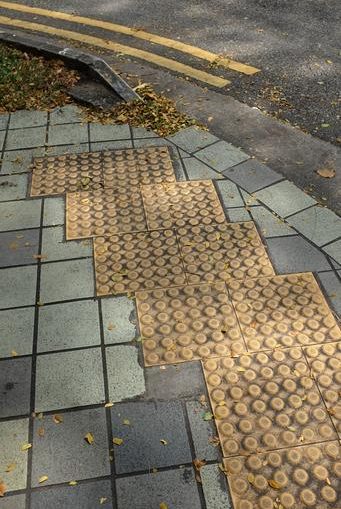These “don’ts” should be kept in mind while developing outdoor places to serve the requirements of blind individuals: Avoid applying textures in places where they do not belong or where they are not needed. Blind people are used to specific surface textures, such as the blistering pavement seen near crosswalks. The rough pavement is of little use if the person feels the blisters but is still unable to locate the crosswalk. It is important to avoid making things more confusing by adding textures to signify characteristics that are missing.
Avoid making the pathways excessively curved in shape. Curves that exist solely for the purpose of aesthetics might be problematic for those who have visual impairments since they can cause confusion and frustration. Make every effort to maintain the pathways in a straight line. If you want to make your establishment more friendly for the visually impaired, we highly recommend that you look into tgsi installation Melbourne

Avoid erecting barriers that are more likely to cause harm than they are to prevent it. People who are blind or have visual impairments may find it easier to traverse your environment if it has poles, rails, or fences; but, these features are not helpful if they are difficult to see or touch, or if they are located in an unexpected position that makes them unsafe. Make sure that these are clearly labelled with contrasting colours and that they are positioned in perfectly rational areas in which a blind person would innately expect to encounter a barrier, like the edge of the motorway or the edge of a community space. This will ensure that a blind person is able to navigate the area without incident.
Avoid making everything exactly the same colour. People who have limited vision need colour contrasts more than anybody else to be able to differentiate between different surfaces, levels, and characteristics.
Avoid using patterns or texturing on the ground that might be misunderstood as navigational aids. It is important to get familiar with the usual navigational signals that individuals who have poor vision would search for, and then to refrain from utilising those cues on the flooring in and around your area unless you are using them appropriately.
Be careful not to keep the area too “open” by using a lot of glass barriers. Glass obstacles are difficult to manage for those with visual impairments and may lead to injuries if they are not avoided. You should only make use of them if you also add labels, glazing, engraving, or some other kind of visible signal to the barrier.

When planning the layout of a place, you should take into account the requirements of all of the individuals who will use it, including those who have challenges with their eyesight. Designing for those who have visual impairments may be challenging at times, but it is very necessary in order to remain in compliance with ADA rules and to make certain that all individuals who enter your area will be able to make effective use of it.

Leave a Reply